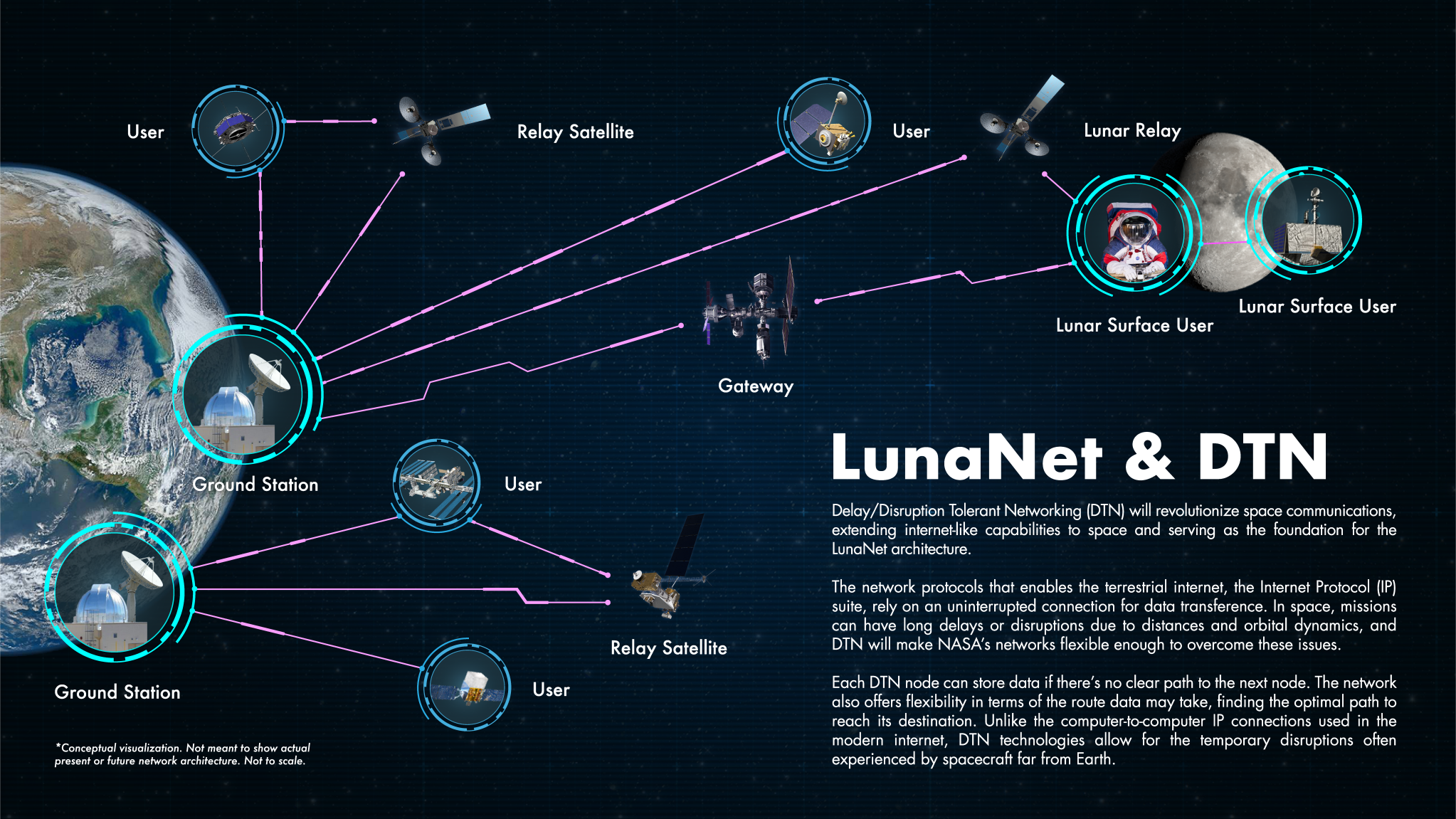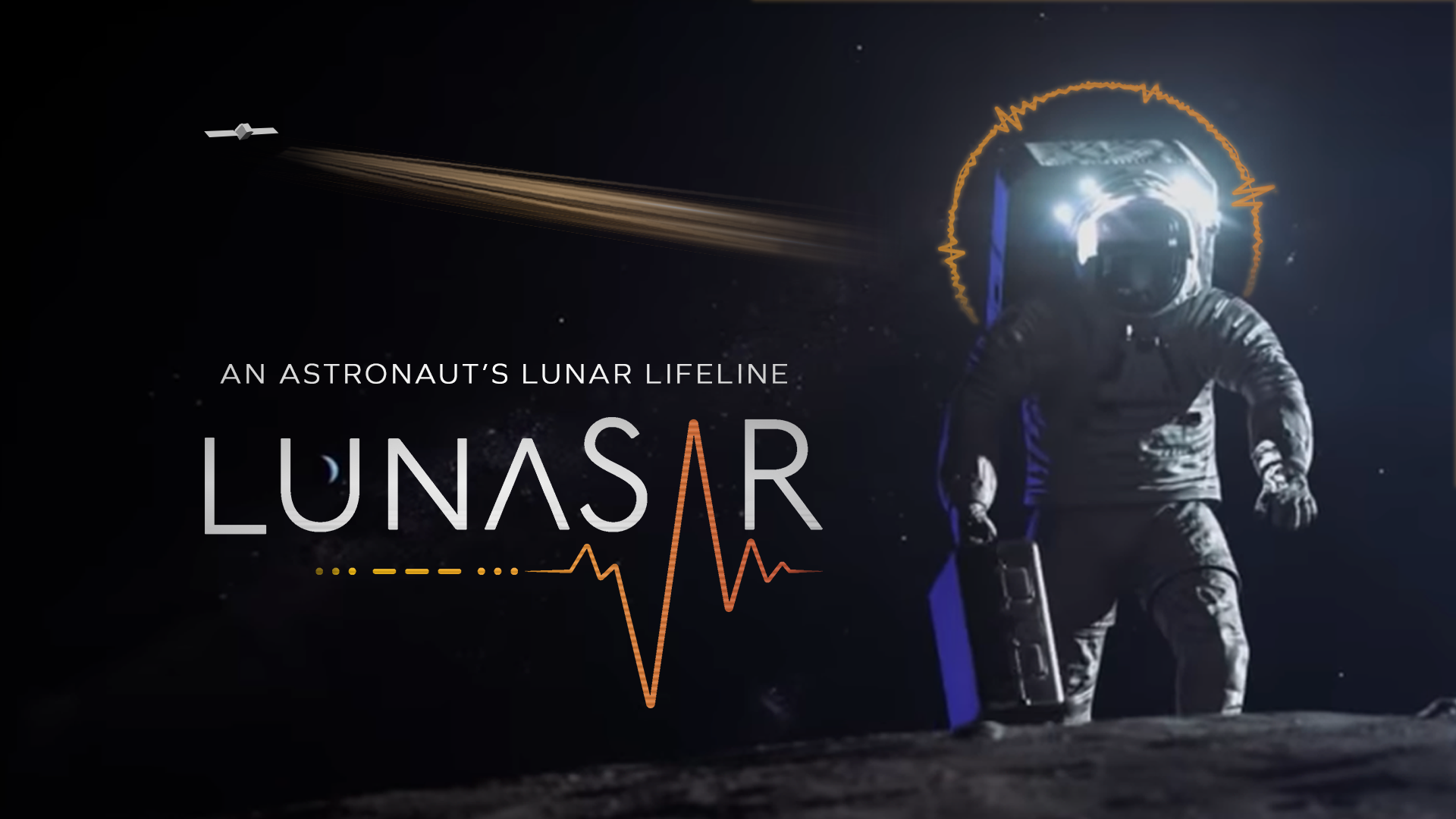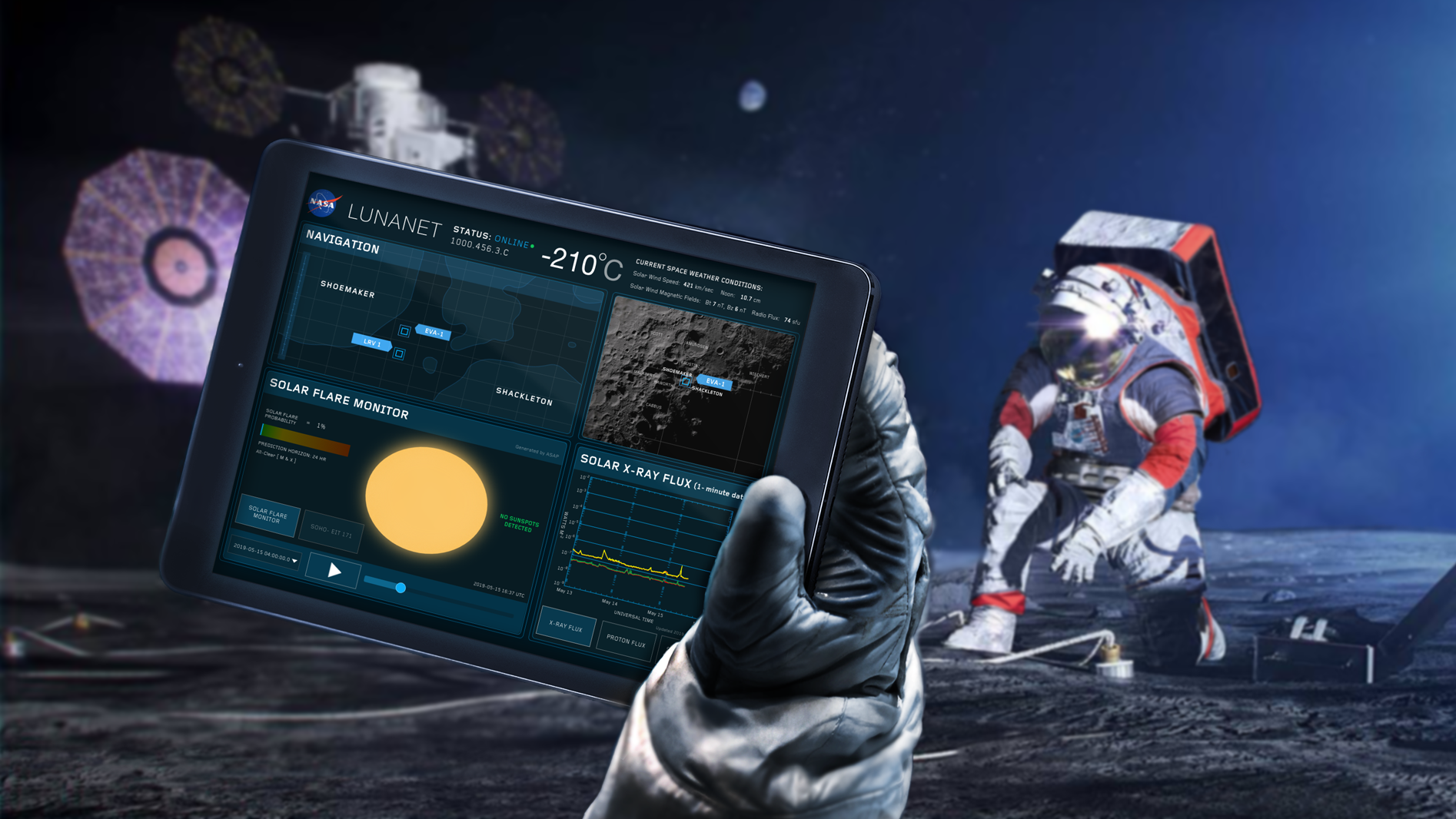With Artemis, NASA will establish a long-term presence at the Moon, opening more of the lunar surface to exploration than ever before. This growth of lunar activity will require new, more robust communications, navigation, and networking capabilities. NASA’s Space Communications and Navigation (SCaN) program has developed the LunaNet architecture to meet these needs.
Together, we’re refining a cutting-edge approach that will meet the needs of lunar missions for many decades to come.”
Dave Israel
Goddard Communications Architect
LunaNet will leverage innovative networking techniques, standards, and an extensible framework to rapidly expand network capabilities at the Moon. This framework will allow industry, academia, and international partners to build and operate LunaNet nodes alongside NASA. These nodes will offer missions four distinct services: networking, navigation, detection and information, and radio/optical science services.
LunaNet Services
Networking
Typically, when missions launch into space, their communication down to Earth is reliant on pre-scheduled links with either a space relay or a ground-based antenna. With multiple missions journeying to the Moon, the reliance on pre-scheduled links could limit communications opportunities and efficiencies. LunaNet offers a network approach similar to the internet on Earth, where users maintain connections with the larger network and do not need to schedule data transference in advance.
The core network framework of LunaNet is Delay/Disruption Tolerant Networking (DTN), which ensures data flows seamlessly through the network and reaches its final destination despite potential signal disruptions. In the event of a disruption between two LunaNet nodes, DTN enables the nodes to store data until the path becomes clear.
Navigation
For lunar navigation, the LunaNet approach offers operational independence from data processing on Earth while maintaining high precision. The architecture will provide missions with access to key measurements necessary for onboard orbit determination and guidance system operations, or surface positioning. Missions using LunaNet navigation services would have everything they need for autonomous navigation at the Moon, whether that be on the surface or in orbit.
“LunaNet will provide a new paradigm for Earth-independent navigation, assuring crewed and robotic missions can quickly and accurately determine their locations and feed that forward to their planning systems,” said Cheryl Gramling, Associate Chief for Technology of the Mission Engineering and Systems Analysis Division.
Detection and Information
LunaNet detection and information services provide alerts and other critical information to users. This and similar capabilities will greatly enhance situational awareness of astronauts, rovers, and other assets on the lunar surface.
As an example, LunaNet will use space weather instruments that detect potentially dangerous solar activity to warn users directly, rather than waiting for direction to do so from network managers on Earth. These alerts will be similar to those humans get on their smartphones for hazardous weather.
LunaNet detection and information services will also include a lunar search and rescue capability, or LunaSAR. LunaSAR leverages the expertise of NASA’s Search and Rescue office, which has long developed technologies for terrestrial search and rescue.
“Astronaut safety and wellbeing are key concerns of the Artemis missions,” said Cody Kelly, Search and Rescue office mission manager for national affairs. “Using LunaNet’s navigation services, LunaSAR will provide location data to NASA distress beacons should contingencies arise.”
Science Services
LunaNet science services will provide nodes the opportunity to perform measurements for the benefit of researchers on Earth using their radio and infrared optical communications links. The network of nodes could provide opportunities for baseline observations of the Moon, frequent measurements that provide a comprehensive study of the lunar environment over time. Additionally, the placement of nodes will allow for regional or global observation of the Moon, offering scientists access to lunar data over large spatial scales.
LunaNet antennas may also be used in applications like radio astronomy, where antennas peer deep into space looking for radio emissions from distant celestial objects. These capabilities will provide scientists with a new platform to test novel theories about space science and advance scientific knowledge.
LunaNet Interoperability Specifications
The LunaNet team published draft interoperability specifications as a starting point for technical discussions among industry and government experts from around the world. The goal is a set of standards that can enable an open, evolving, cooperative lunar communications and navigation architecture.
“Artemis is a collaborative endeavor, relying on academia, commercial aerospace companies, and the international community. LunaNet is no different,” said Jaime Esper, who helped lead development of the draft interoperability specifications. “Together, we hope to define a robust architecture that can meet the needs and desires of the widest possible set of user missions and service providers.”
LunaNet Background
LunaNet began its life at NASA’s Goddard Space Flight Center in Greenbelt, Maryland with a cross-functional team of networking, navigation, science, and systems engineering experts building upon previous NASA and international activities. From this foundation, experts agency-wide came together to refine the proposal and develop draft interoperability standards, and LunaNet is now being led out of the Space Communications and Navigation (SCaN) program office.
“LunaNet is an exciting opportunity for the NASA communications and navigation team and the science and exploration community at large,” said Dave Israel, communications architect at Goddard. “Together, we’re refining a cutting-edge approach that will meet the needs of lunar missions for many decades to come.”































